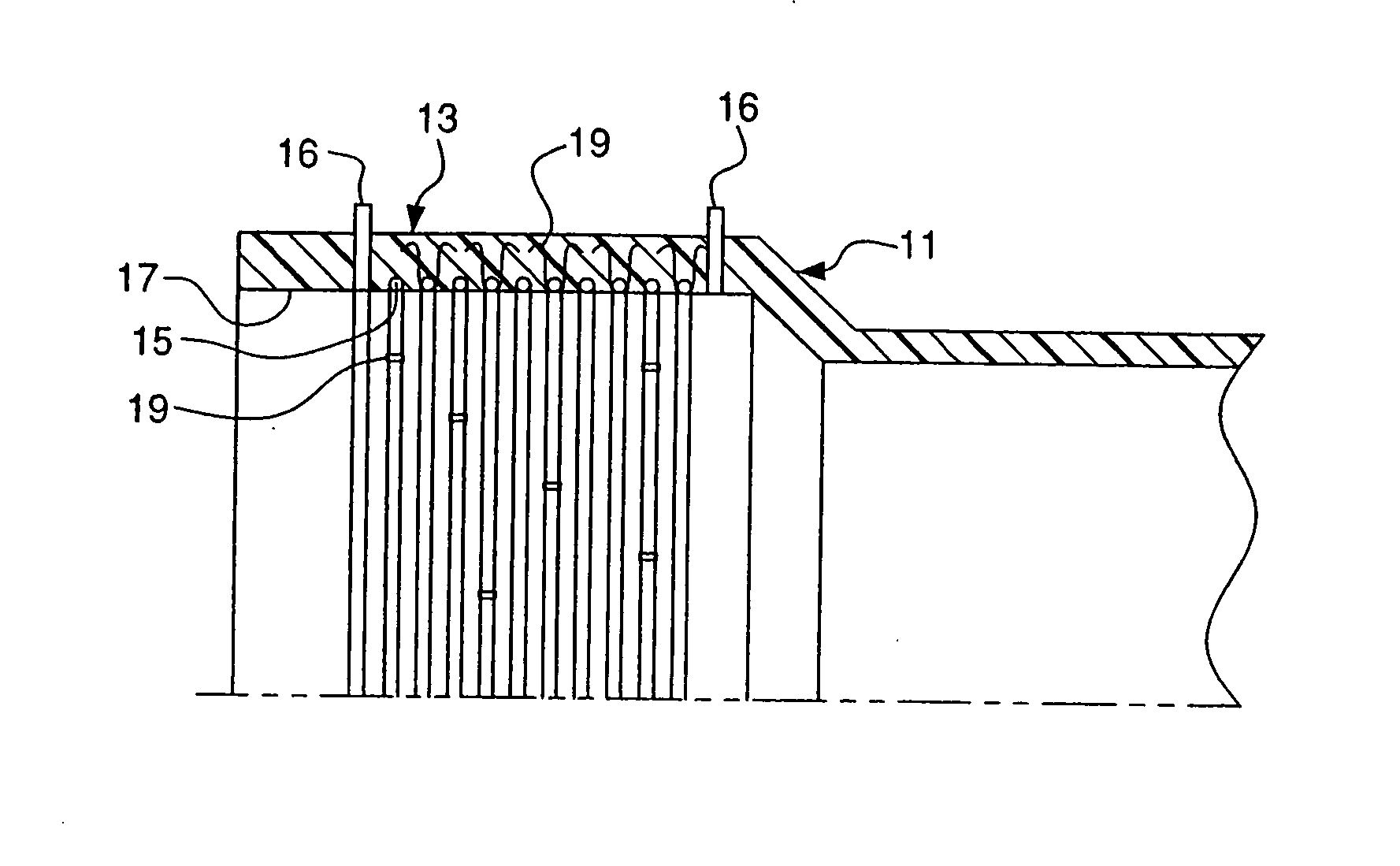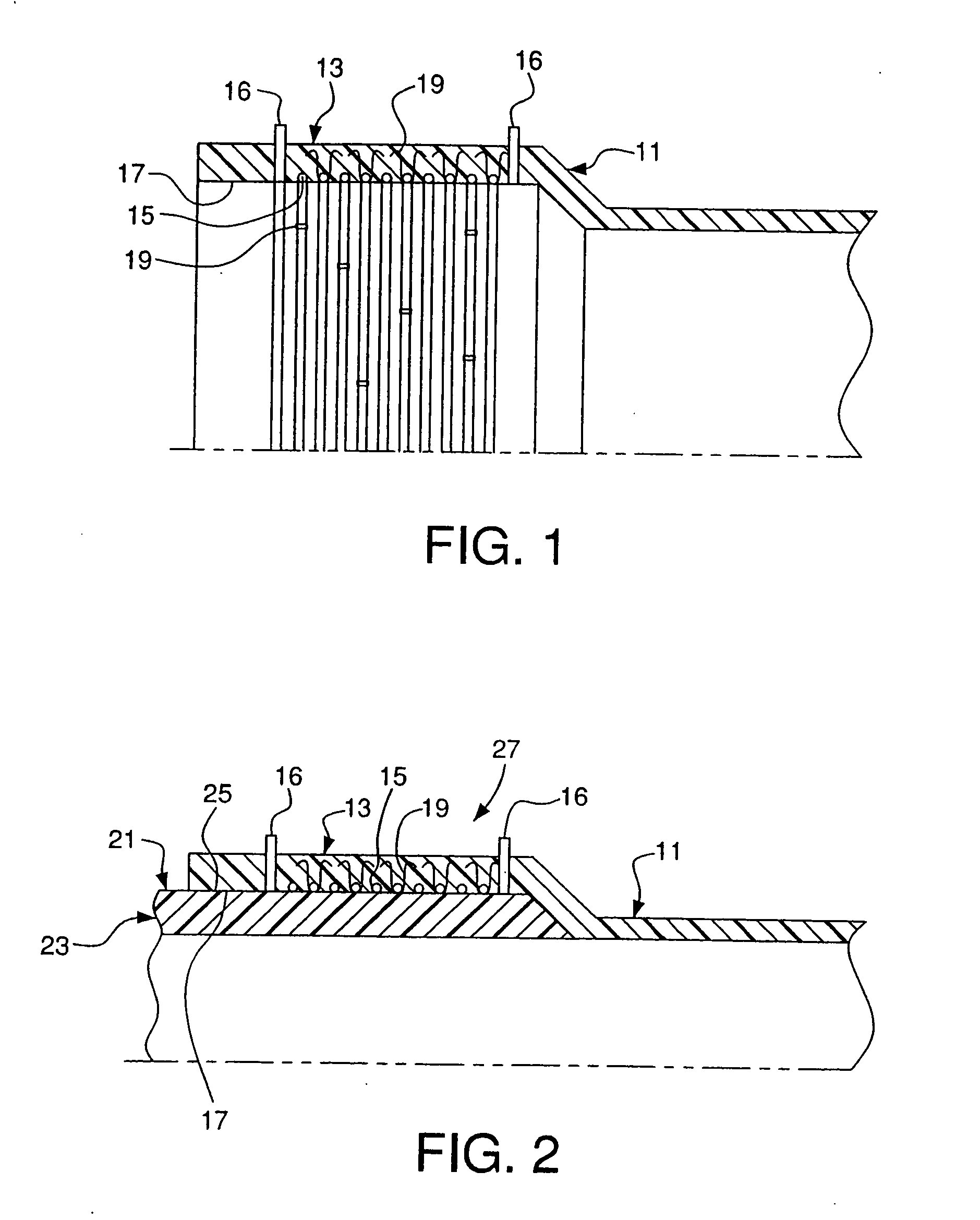Electrofusion socket forming system
a technology of electrofusion socket and forming system, which is applied in the direction of pipe elements, heating element shapes, heating elements, etc., can solve the problems of short circuit, loss of power, and end of electrofusion joint formation
- Summary
- Abstract
- Description
- Claims
- Application Information
AI Technical Summary
Benefits of technology
Problems solved by technology
Method used
Image
Examples
Embodiment Construction
[0033] As seen in FIGS. 1-16, the present invention relates to assemblies for and methods of making an electrofusion weld joint. A meltable member, such as a pipe member as shown in FIG. 1 or a double socket fitting as shown in FIG. 11, has a heating element and at least one fastener attaching the heating element to the meltable member. The meltable member may be a pipe, fitting or any other suitable member in which the heating element is to be embedded. Preferably, the meltable member is a thermoplastic. The methods and assemblies described herein may be used to create an electrofusion weld joint for pipe of any diameter. Preferably, meltable members having diameters of eighteen inches and larger are used to make an electrofusion joint.
[0034] As shown in FIG. 1, a bell portion 13 of a pipe 11 has a heating element 15 embedded therein. Preferably, the heating element 15 is embedded from the inner surface 17 of the bell portion 13 of the pipe 11. At least one fastener 19 is used to ...
PUM
| Property | Measurement | Unit |
|---|---|---|
| diameters | aaaaa | aaaaa |
| taper angle | aaaaa | aaaaa |
| taper angle | aaaaa | aaaaa |
Abstract
Description
Claims
Application Information
 Login to View More
Login to View More - R&D
- Intellectual Property
- Life Sciences
- Materials
- Tech Scout
- Unparalleled Data Quality
- Higher Quality Content
- 60% Fewer Hallucinations
Browse by: Latest US Patents, China's latest patents, Technical Efficacy Thesaurus, Application Domain, Technology Topic, Popular Technical Reports.
© 2025 PatSnap. All rights reserved.Legal|Privacy policy|Modern Slavery Act Transparency Statement|Sitemap|About US| Contact US: help@patsnap.com



